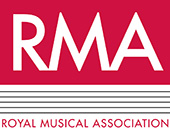Gaiety, Glitz and Glamour: Reawakening the “Silver Age” of Twentieth-Century Operetta
On Saturday 14 October 2017, the so-called ‘Silver Age’ of operetta was reawakened with an interdisciplinary study day at Senate House Library. In association with the German Operetta in London and New York, 1907–1939 (GOLNY) project, led by Derek B Scott (University of Leeds) with Anastasia Belina (Royal College of Music), the study day offered a select group of doctoral candidates, established scholars and industry professionals the opportunity to indulge their passion for this oft-neglected topic.
To start the day guest speaker John Snelson (Royal Opera House) drew parallels between The Merry Widow, the highly successful 1907 English adaptation of Lehár’s Die lustige Witwe (1905), and the work’s influence on British operetta. Following Snelson’s insights, Valeria De Lucca (University of Southampton) discussed the unprecedented success and mixed critical reception of Ferdinando Fontana’s adaptation of Lehár’s operetta, La Vedova allegra (1907) which premiered in Milan even before the English adaptation made its way to the stages of London and New York.
Throughout the day the transnationality of operetta was a recurrent theme. Offering insight into this complexity, Tobias Becker (German Historical Institute), in conversation with Derek Scott, discussed the cultural transfer between the musical stages of Berlin and London as explored in Tobias’s book Inszenierte Moderne: Populäres Theater in Berlin und London, 1880–1930.
Most excitingly film and visual representation featured quite strongly in papers presented by early career researchers. Katie L. Gardner (University of Oxford) delved into the world of circus and the visual legacy of the circus performer, focusing specifically on Emmerich Kálmán’s operetta Die Zirkusprinzessin (1926) and the mysterious character of Mister X. By utilizing the unique visual example of the cartoon Popeye and the Man on the Flying Trapeze (1934) Katie argued the representation of the character draws heavily on the transnational visual legacy of the circus performer, thereby perpetuating the mythology of the male circus performer. Continuing the interdisciplinary approach, Judith Wiemers (Queen’s University Belfast) discussed the operettas of Paul Abraham. Using a rich series of audiovisual examples, Wiemers illustrated the fascinating ways in which the composer and his librettists incorporated references to 1930s American popular culture musically by employing jazz themes and musical reminiscences to works by Gershwin and Cole Porter, and textually by adapting popular American expressions. Finally, Stefanie Arend (University of Oxford) discussed Eric Charell’s Der Kongress tanzt (The Congress Dances) (1932), described as an “operetta extravaganza” on film. With its opulent costumes and elaborate settings, Arend posited the film as the prototypical example of film operetta, highlighting several links between the operetta genre and the film, most notably the three-act structure and musical citations of melodies by Austrian composer Josef Strauss, the younger brother of Johann Strauss II.
The study-day offered exciting perspectives of the vast transnationality of operetta, and also the richness of sources available and their application. Given the interest in both academic and non-academic spheres, one looks forward to what future research in the field of operetta will uncover.
Melissa Gerber is a third-year PhD candidate at the University of the Free State, Bloemfontein, currently visiting King’s College London, where she writes about postcolonial/apartheid cultural identity and representation in contemporary South African opera.
